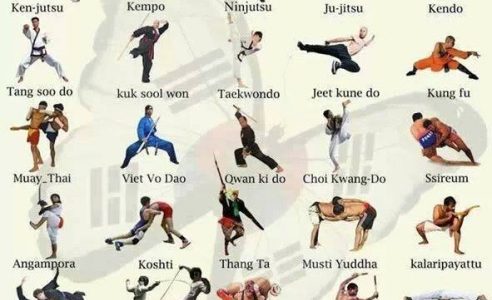Unraveling The Enigma Of Numerous Fighting Style Self-Controls: An Overview To Karate, Taekwondo, And Extra
Unraveling The Enigma Of Numerous Fighting Style Self-Controls: An Overview To Karate, Taekwondo, And Extra
Blog Article
Web Content Created By-Magnussen Haastrup
Are you tired of sensation bewildered by the substantial globe of martial arts? With numerous styles to select from, it can be easy to get shed in a sea of punches, kicks, and mysterious names. But fear not!
This discussion will debunk the different martial arts styles, taking you on a journey from the powerful strikes of Martial arts to the dynamic kicks of Taekwondo. Prepare to discover the beginnings, techniques, and viewpoints behind these ancient art types.
So, tighten your belt and prepare to embark on an enlightening expedition into the fascinating world of fighting styles.
Beginnings of Martial Arts Styles
The beginnings of martial arts designs can be mapped back to old worlds and their need for self-defense and combat techniques. Throughout history, various societies developed their very own one-of-a-kind methods of combating, each with its very own set of techniques and approaches.
In China, for instance, fighting styles styles such as Kung Fu and Tai Chi were established as a way of protection and boosting physical and psychological health.
In Japan, the samurai warriors produced styles like Martial arts and Judo, concentrating on discipline, accuracy, and proficiency of the body.
Similarly, in Korea, Taekwondo emerged as a martial art highlighting high kicks, quick motions, and psychological perseverance.
These very early people laid the foundation for the diverse variety of martial arts designs that exist today, each with its very own rich background and social importance.
Methods and Training Techniques
To master fighting styles designs, experts should learn different strategies and training approaches.
Strategies are the specific movements and actions used in combat, such as punches, kicks, throws, and obstructs. krav maga near me fighting styles designs have their own unique collection of methods that professionals need to master through strenuous training.
Training methods differ depending on the style, but they usually involve a mix of physical fitness, drills, competing, and types.
Physical fitness is important to build toughness, flexibility, and endurance. preschool karate class refine their methods and enhance their rate and precision.
Sparring allows professionals to practice their strategies in a controlled, realistic atmosphere. Forms, also known as kata, are cut-and-dried series of movements that aid experts create muscle mass memory and focus.
Ideologies and Principles
Discovering the viewpoints and concepts of fighting styles designs can give you with a deeper understanding of your selected self-control. Each martial art has its very own distinct ideology and collection of guiding concepts that shape the means it's practiced.
For example, Martial arts stresses discipline, regard, and self-constraint. It teaches practitioners to concentrate their body and minds, allowing them to defend themselves while preserving a sense of internal tranquility.
On the other hand, Taekwondo positions a solid emphasis on rate, dexterity, and adaptability. Its concepts are rooted in the tenets of politeness, integrity, willpower, self-control, and indomitable spirit.
Conclusion
Since you have actually explored the origins, techniques, and ideologies of numerous fighting styles designs, you have a much deeper understanding of these old self-controls.
Envision relevant website , exercising with unwavering decision and focus, appearing boards with a powerful strike.
Their journey showcases the dedication and stamina needed to master a martial art, reminding us that with technique and willpower, anything is possible.
